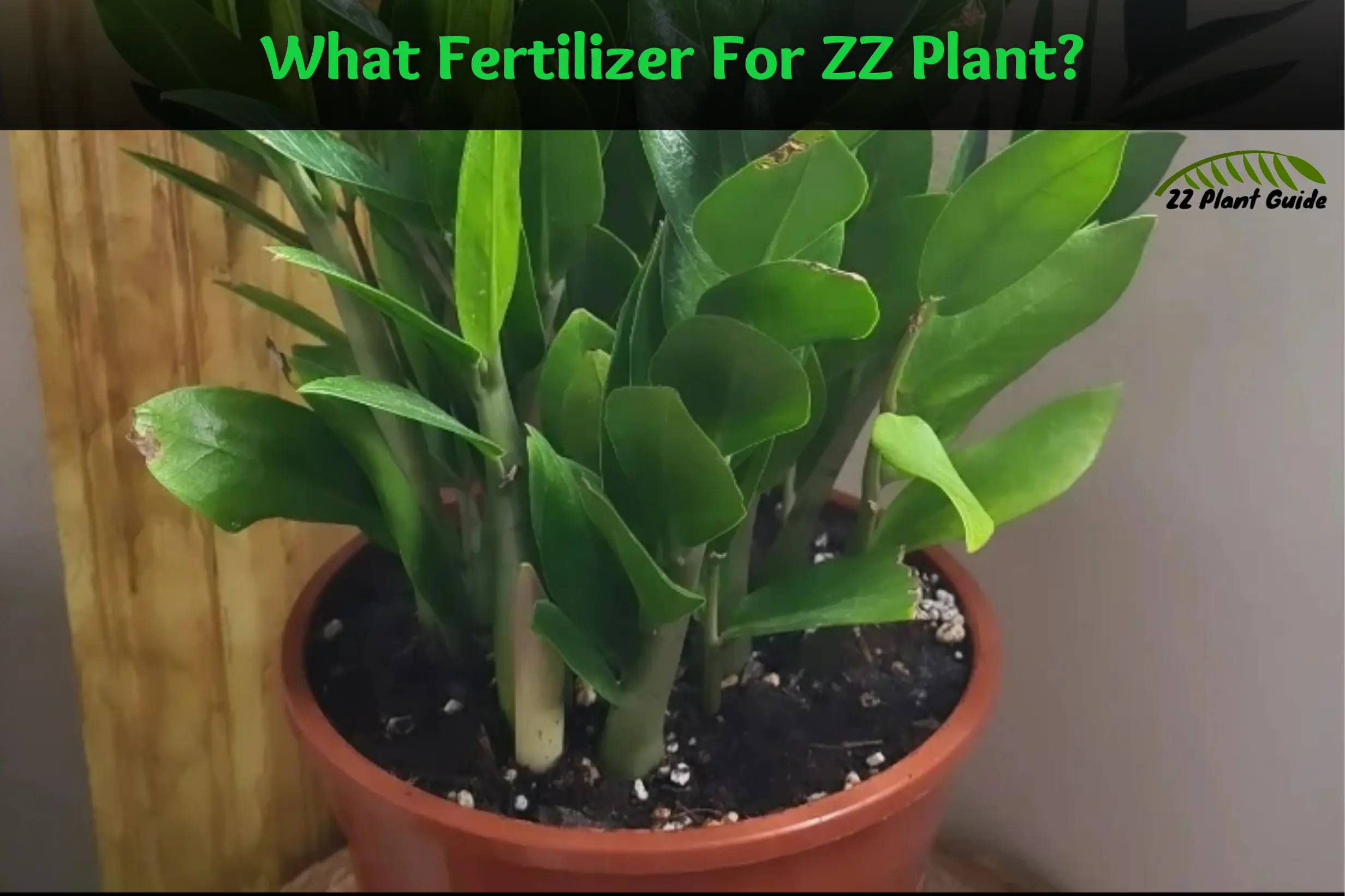We see you eyeing that lush, green ZZ plant in your living room. You’ve got the watering schedule down, your plant is bathing in the perfect light, and you two are basically inseparable.
But wait! Are you feeding your beloved green buddy the right fertilizer? Don’t worry, we’ve got you covered. This guide is all about giving your ZZ plant the nourishment it craves, without the complicated jargon.
The ZZ Plant – A Quick Refresher
Before we dive into the wild world of fertilizers, let’s get to know our friend, the ZZ plant, a little better. Also known as Zamioculcas zamiifolia, the ZZ plant hails from the tropical regions of East Africa.
This hardy houseplant is known for being incredibly low-maintenance and can handle a bit of neglect. It’s basically the perfect roommate – it won’t judge you if you forget to water it for a week or two.
To Fertilize or Not to Fertilize – That’s the Question!
Now, you might be wondering, “Does my ZZ plant even need fertilizer?” The short answer is yes, but don’t worry, it’s not a high-maintenance diva.
Your ZZ plant will happily grow without fertilizer, but to truly let it flourish, you’ll want to give it a little extra TLC.
Fertilizing your ZZ plant helps it grow stronger, greener leaves and will give it that extra boost to really show off in your living space. Plus, it’s a chance for you two to bond – think of it as the spa day your plant deserves!
The Fabulous Fertilizer Fiesta – What to Look For
Now that we’ve established the need for fertilizer, let’s talk about what kind of fertilizer your ZZ plant wants to party with. Here’s a quick rundown of the key nutrients your ZZ plant craves:
Nitrogen (N)
The muscle-builder, nitrogen helps with leaf growth and gives your plant that Insta-worthy green hue.
Phosphorus (P)
The energy-booster, phosphorus supports strong root development and helps your plant bloom (if it ever decides to, that is).
Potassium (K)
The immune-system champion, potassium keeps your plant healthy and helps it resist diseases.
When shopping for fertilizer, look for a balanced, slow-release formula with an N-P-K ratio close to 10-10-10 or 14-14-14. This means that the fertilizer contains equal parts nitrogen, phosphorus, and potassium, giving your ZZ plant the perfect blend of nutrients.
The Fertilizer Party – How to Apply
Now that you’ve found the perfect fertilizer for your ZZ plant, let’s talk about how to get it to your plant’s roots. The process is pretty simple, but there are a few things to keep in mind:
Timing is Everything
Your ZZ plant will benefit most from fertilization during its active growing season, which is usually between spring and early fall. During this time, fertilize your ZZ plant every two months.
Less is More
When it comes to fertilizing your ZZ plant, don’t go overboard. Follow the recommended dosage on the fertilizer package, and remember that it’s better to under-fertilize than to overdo it. Your ZZ plant is a chill buddy and doesn’t need much to be happy.
Mix It Up
If you’re using a granular slow-release fertilizer, mix it into the topsoil, making sure it’s evenly distributed. For a liquid fertilizer, dilute it with water according to the package instructions and water your ZZ plant as usual. This will ensure the fertilizer reaches the roots and is absorbed effectively.
Keep it Clean
After applying the fertilizer, make sure to clean any excess from the leaves and stems. Your ZZ plant doesn’t want to sit in a pile of nutrients – it’s like wearing a soggy towel after a shower, yuck!
Troubleshooting – Common Fertilizer Faux Pas
Even the most attentive plant parents can encounter some hiccups along the way. Here’s how to spot and fix common fertilizer issues:
Yellowing Leaves
If your ZZ plant’s leaves are turning yellow, it could be a sign of over-fertilization. Cut back on the fertilizer, and your plant should bounce back to its green glory.
Crusty Soil
White or crusty buildup on the soil’s surface could be a sign of salt accumulation from too much fertilizer. Flush the soil with water and reduce the frequency of fertilization to help your ZZ plant recover.
Leaf Burn
If you notice brown tips or burned spots on the leaves, it might be due to the fertilizer’s direct contact. Make sure to keep the fertilizer off the leaves and stems to avoid this issue.
The Organic Alternative – Going Green
If you’re looking for a more eco-friendly option, consider using organic fertilizer. Organic fertilizers, such as compost or worm castings, provide a slow-release source of nutrients for your ZZ plant. Plus, they’re great for the environment! When using organic fertilizers, follow the same application tips mentioned before.
Final Say!
There you have it, plant parents – your ultimate guide to fertilizing your ZZ plant. With this knowledge in your back pocket, you and your ZZ plant are ready to take on the world (or at least your living room) together.
Just remember, when it comes to fertilizer, your ZZ plant is more into casual get-togethers than wild parties. Keep it simple, keep it balanced, and your ZZ plant will reward you with lush, green growth for years to come.
FAQs
Absolutely! As long as it’s a balanced, slow-release formula with an N-P-K ratio close to 10-10-10 or 14-14-14, your ZZ plant will be one happy camper.
During the active growing season (spring to early fall), fertilize your ZZ plant every two months. Remember, your ZZ plant is a low-key buddy and doesn’t need constant attention.
While some houseplants appreciate a coffee ground boost, it’s not recommended for ZZ plants. Stick to a balanced, slow-release fertilizer or organic alternatives like compost or worm castings.




